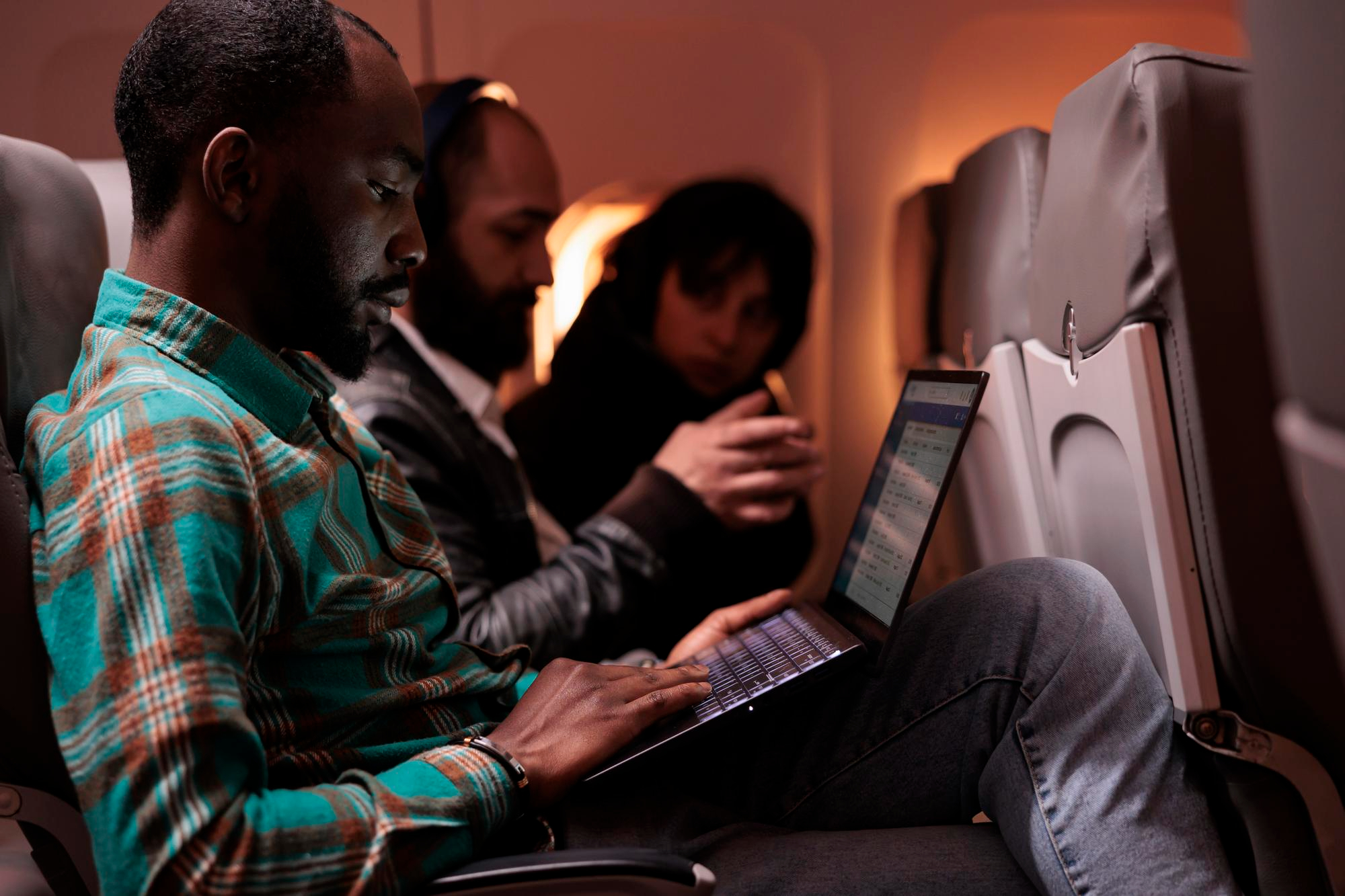For digital nomads, remote workers, and frequent travelers, bringing a laptop on board airlines is essential for staying connected and productive while on the move. However, navigating airline policies and ensuring the safety of your device during travel can be challenging. In this comprehensive guide, we’ll provide practical tips and expert advice on how to travel with a laptop in airlines, from packing strategies and security measures to in-flight productivity hacks and troubleshooting common issues.
Choosing the right laptop for travel
When selecting a laptop for travel, it’s crucial to prioritize portability, durability, and battery life. Opt for lightweight models with long-lasting batteries to avoid the hassle of frequent charging and carrying bulky equipment. Consider a compact design that easily fits into your carry-on luggage without adding unnecessary weight or bulk.
Additionally, choose a laptop with sturdy construction and durable materials to withstand the rigors of travel, including bumps, drops, and temperature variations. Investing in a reliable laptop that meets your specific needs and travel requirements will ensure a seamless and enjoyable experience on the road.
Packing and protecting your laptop
When it comes to packing and protecting your laptop for travel, it’s essential to take precautions to ensure its safety and functionality throughout your journey. Here are some tips to help you pack and protect your laptop effectively:
Packing:
- Use a dedicated laptop bag or sleeve to provide cushioning and protection against bumps and shocks during transit.
- Place your laptop in the main compartment of your carry-on luggage to keep it secure and easily accessible.
- Avoid packing heavy or sharp objects near your laptop to prevent accidental damage or scratches.
- Consider using a laptop organizer or padded insert to keep your device and accessories neatly organized and protected.
Protecting:
- Invest in a quality laptop case or sleeve with shock-absorbing padding to safeguard your device from impact and pressure.
- Use a screen protector to minimize the risk of scratches and smudges on your laptop’s display during travel.
- Enable password protection and encryption to secure your data and prevent unauthorized access in case of loss or theft.
- Install tracking software or activate the “Find My Device” feature on your laptop to help locate it in case it goes missing.
By following these packing and protection tips, you can ensure that your laptop remains safe and secure during your travels, allowing you to focus on enjoying your trip without worrying about potential damage or loss.
Airport security and regulations
Navigating airport security with your laptop requires careful planning and adherence to specific regulations to ensure a smooth and hassle-free experience. Here’s what you need to know about airport security and regulations when traveling with your laptop:
Preparation:
- Keep your laptop easily accessible in your carry-on luggage to facilitate the security screening process.
- Familiarize yourself with the Transportation Security Administration (TSA) guidelines regarding electronic devices to avoid delays or complications at the security checkpoint.
- Remove your laptop from its bag and place it in a separate bin for screening when passing through the security scanner.
Security screening:
- Be prepared to undergo additional screening procedures if necessary, such as a manual inspection or swab test for traces of explosive materials.
- Follow the instructions of security personnel and cooperate with any requests related to the inspection of your laptop or electronic devices.
- Ensure that your laptop is fully charged and operational, as security officers may ask you to power it on to verify its functionality.
Regulations:
- Check the airline’s policies regarding electronic devices, including any restrictions on the use of laptops during the flight or specific requirements for stowing them during takeoff and landing.
- Verify the regulations of your destination country regarding the importation of electronic devices, as some countries may have restrictions or customs duties applicable to laptops brought from abroad.
- Keep your boarding pass and identification documents readily available for inspection by airport security personnel.
By understanding and complying with airport security procedures and regulations, you can navigate the screening process with confidence and ensure that your laptop remains secure and accessible throughout your journey.
Tips for using your laptop during the flight
| Tip | Description | Benefits |
| 1. Preload offline content | Download movies, music, e-books, and documents onto your laptop before the flight to enjoy entertainment and productivity without relying on inflight Wi-Fi. | Ensures uninterrupted access to entertainment and work materials, even without internet connectivity. |
| 2. Adjust your seat for comfort | Position your seat to minimize strain on your neck and wrists while using your laptop, ensuring a comfortable and ergonomic workspace during the flight. | Reduces the risk of discomfort or injury associated with prolonged laptop use in cramped seating conditions. |
| 3. Use a laptop stand or tray table | Elevate your laptop using a stand or utilize the tray table provided by the airline to maintain a stable and ergonomic viewing angle while working or watching movies. | Improves airflow and ventilation around your laptop, preventing overheating and enhancing overall comfort. |
| 4. Bring noise-canceling headphones | Block out ambient noise and distractions with noise-canceling headphones, allowing you to focus on your tasks or enjoy immersive entertainment without disturbance. | Enhances audio quality and clarity, creating a more enjoyable and productive listening experience during the flight. |
| 5. Take regular breaks and stretch | Avoid prolonged periods of laptop use by taking short breaks to stretch your muscles and improve circulation, reducing the risk of stiffness and discomfort. | Promotes blood flow and relieves muscle tension, preventing fatigue and maintaining your physical well-being during long flights. |
Using these tips, you can make the most of your laptop during the flight, staying productive and entertained while traveling to your destination.
Connectivity options while traveling
Staying connected while traveling is essential for staying productive and in touch with loved ones. Here are some connectivity options to consider:
- Wi-Fi hotspots:
- Research Wi-Fi availability at your destination, including cafes, hotels, and public spaces offering free or paid Wi-Fi access.
- Use Wi-Fi hotspots to access the internet and stay connected to work, social media, and entertainment while on the go.
- Mobile data plans:
- Purchase a local SIM card or international data plan to access mobile data services in your destination country.
- Ensure your smartphone or mobile hotspot is compatible with the local network and offers sufficient data coverage for your needs.
- Portable hotspots:
- Invest in a portable Wi-Fi hotspot device or tethering feature on your smartphone to create a personal Wi-Fi network for your laptop and other devices.
- Carry a backup power bank to ensure continuous connectivity, especially in areas with limited access to power outlets.
- Satellite internet:
- Consider satellite internet services for remote or off-grid travel destinations where traditional Wi-Fi and mobile networks may be unavailable.
- Research satellite internet providers and equipment options suitable for your travel needs and budget.
- Roaming agreements:
- Check with your mobile carrier for international roaming agreements and data packages to avoid unexpected charges while traveling abroad.
- Enable data roaming on your smartphone or mobile hotspot and monitor your usage to stay within your data allowance and budget.
By exploring these connectivity options, you can stay online and connected wherever your travels take you, ensuring a seamless and enjoyable experience on the road.




